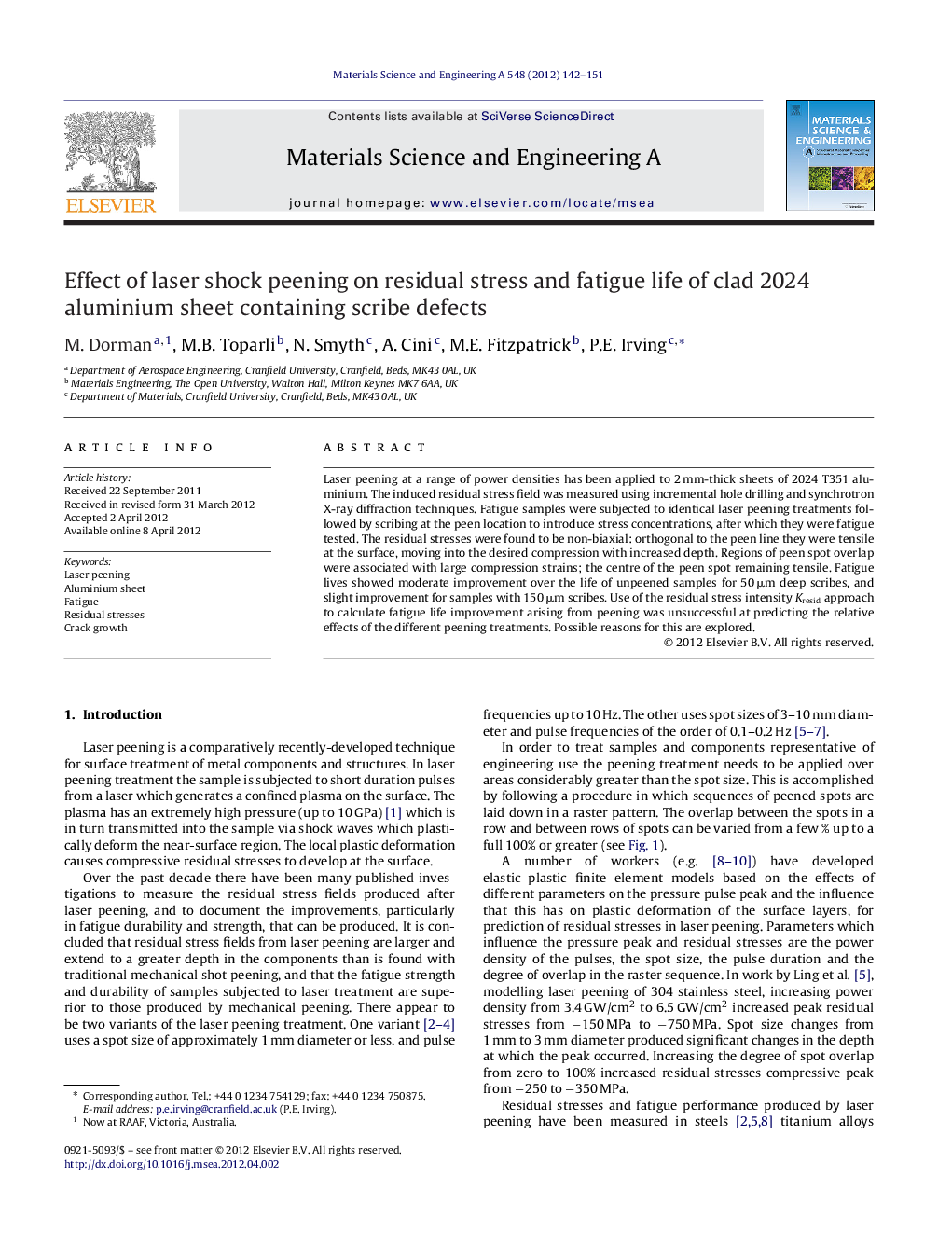| Article ID | Journal | Published Year | Pages | File Type |
|---|---|---|---|---|
| 1577393 | Materials Science and Engineering: A | 2012 | 10 Pages |
Laser peening at a range of power densities has been applied to 2 mm-thick sheets of 2024 T351 aluminium. The induced residual stress field was measured using incremental hole drilling and synchrotron X-ray diffraction techniques. Fatigue samples were subjected to identical laser peening treatments followed by scribing at the peen location to introduce stress concentrations, after which they were fatigue tested. The residual stresses were found to be non-biaxial: orthogonal to the peen line they were tensile at the surface, moving into the desired compression with increased depth. Regions of peen spot overlap were associated with large compression strains; the centre of the peen spot remaining tensile. Fatigue lives showed moderate improvement over the life of unpeened samples for 50 μm deep scribes, and slight improvement for samples with 150 μm scribes. Use of the residual stress intensity Kresid approach to calculate fatigue life improvement arising from peening was unsuccessful at predicting the relative effects of the different peening treatments. Possible reasons for this are explored.
► Effect of laser peen intensity on local residual stress fields in 2024 aluminium. ► Peening induces significant changes in surface topography and local hardness. ► Residual stress at peen spot centre in tension, spot overlap in compression. ► Notched fatigue lives increased; crack morphology correlated to residual stress field. ► Large peening power densities can cause fatigue life reduction in notched samples.
